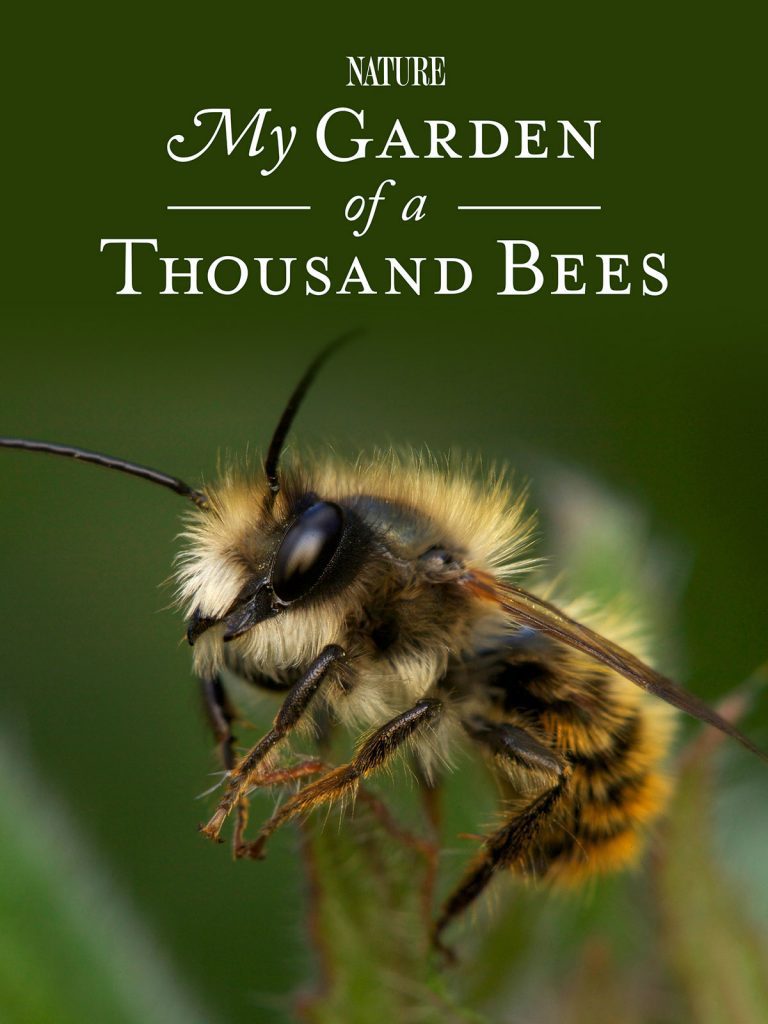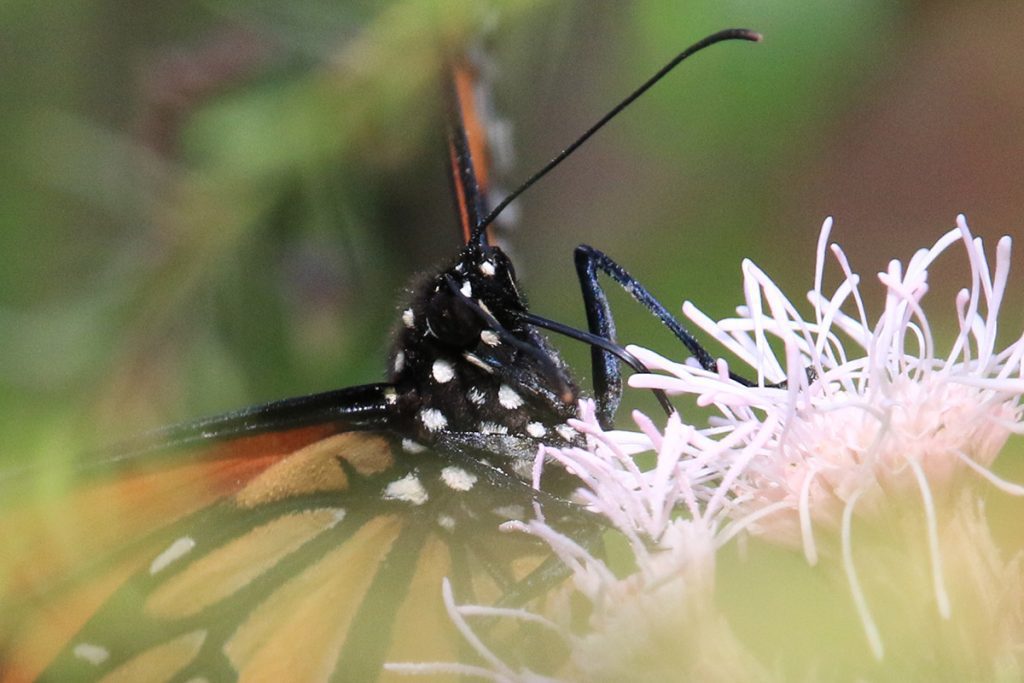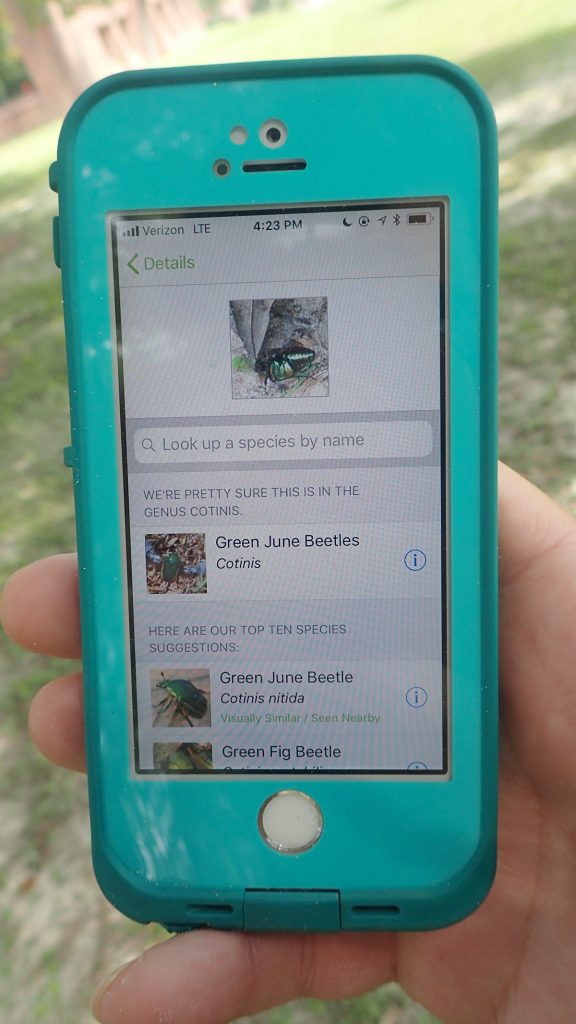Scroll down for resources on creating a bee friendly garden in north Florida. We cover everything from plants, nesting habitat, and water supply. We also have a guide to local species. Aside from maybe fruits and veggies, nothing is as satisfying to a gardener than bees and butterflies on your flowers!
This page was created for WFSU’s My Garden of a Thousand Bees project, in support of Nature’s episode of the same name. The project was funded by a grant from Nature | PBS and HHMI | Tangled Bank Studios.
Thank you to our project partners:

Bee Garden Resources
With the help of its partners, WFSU has put together the following videos and blog posts full of the information you need to make a home for bees in your yard.
Bee Friendly Plants
30+ Bee Friendly Plants for North Florida
Different bees emerge at different times. Does your yard have flowers to support them all from spring through fall?
Florida Friendly Plants Seasonal Planting Guide
The UF/ IFAS Leon County Extension created this guide to what plants you can put in the ground in each month of the year.
Identifying Your “Weeds”
Some of the bee friendly plants we’ve learned about actually want to grow for free in your yard. Here are some tips for identifying and learning about the weeds in your yard.
Devil’s Walkingstick
We spotlight one plant that, for a few weeks in the summer, is swarmed by pollinators.
The Seasonality of Bees in North Florida
A tour of bees and pollinator plants throughout the year; you can mark the season by the bees and blooms you see at a given time in the year.
Bee Nesting Habitat
Nesting and Overwintering Habitat for Bees
Tips on keeping your garden a little more like a natural habitat, with places where different bee species can build their nests.
Creating a Wildlife Pond in Your Yard
Like all animals, bees need water. Learn how to create a pond in your yard featuring native plants, and which includes places for bees to drink safely.
Bee species
Get to know the bees of north Florida/ south Georgia
A guide to the common bees we see in north Florida, plus a few that are less common.
The American Bumblebee
Beekeepers in Tallahassee raise a nest of American bumblebees. Once the most common bumblebee species in the US, habitat loss has reduced their numbers, and the bees are now federally listed as Vulnerable.
UF/ IFAS Bees of North Florida Poster (PDF)
WFSU Bee Activities for Kids
Bee videos, podcasts, and activities for kids from WFSU, PBS, and American Public Media.

NOW STREAMING- PBS Nature: My Garden of a Thousand Bees. The story focuses on wildlife filmmaker Martin Dohrn. With the world on lockdown in 2020, Dohrn turned his camera on the small garden in his backyard, discovering the diverse world of wild bees.
Through a grant from PBS Nature, WFSU hopes to create a similar experience for our viewers in the north Florida/ south Georgia area. Any outdoor space has potential to attract bees. Our partners at Native Nurseries of Tallahassee, the UF/ IFAS Leon County Extension, and Florida Native Plant Society are sharing their considerable knowledge with us. We hope you’ll join us and create a bee friendly habitat in your own yard. On this page is the information you need to get started.
Support for Nature: My Garden of a Thousand Bees was provided by The Hite Foundation, Bradley L. Goldberg Family Foundation and The Sun Hill Family Foundation in memory of Susan and Edwin Malloy. Series funding for Nature is also made possible in part by the Arnhold Family in memory of Henry and Clarisse Arnhold, The Fairweather Foundation, Kate W. Cassidy Foundation, Sue and Edgar Wachenheim III, Kathy Chiao and Ken Hao, Charles Rosenblum, Filomen M. D’Agostino Foundation, Lillian Goldman Charitable Trust, Leonard and Norma Klorfine, Sandra Atlas Bass, Colin S. Edwards, Gregg Peters Monsees Foundation, Koo and Patricia Yuen, by the Corporation for Public Broadcasting and by public television viewers.

Dig Deeper into Backyard Ecology
What can we do to invite butterflies, birds, and other wildlife into our yards? And what about the flora and fauna that makes its way into our yards; the weeds, insects, and other critters that create the home ecosystem? WFSU Ecology Blog takes a closer look.

Apps and Citizen Science mentioned in the Backyard Blog
iNaturalist
Identify plants, animals, lichens, and fungi in your yard. Other users correct your identifications if you’re wrong, and even if they don’t, it can be a good springboard to further research.
Seek by iNaturalist
Instant identification, and it doesn’t record your location. This is a good option for kids with phones.
Monarch Larva Monitoring Project
Enter information about monarch caterpillars in your yard, and help researchers get a sense of the health of the monarch population that year, and how and when they’re migrating.
Great Sunflower Project
Record the number of pollinators visiting your flowers, and help researchers map pollinator activity across the country.

